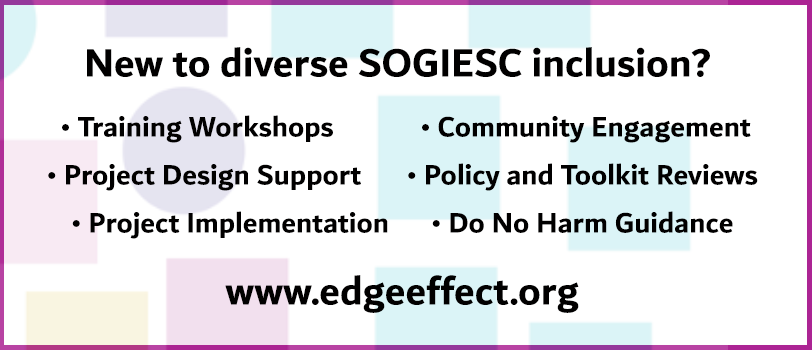While many gaps remain, a small but growing body of literature has expanded to address the particular experiences of gender-based violence (GBV) among individuals and groups with diverse sexual orientations, gender identities and expressions, and sex characteristics (SOGIESC). This literature covers different settings, including fragile and conflict affected settings (FCASs) (Moore and Barner, 2017; Gray et al., 2020; Kiss et al., 2020; and others), and urban, refugee and migrant contexts (Refuge Point, 2017; Bhagat, 2018; Chynoweth, 2019; Rahill et al., 2019; Chynoweth, 2020; Marnell et al., 2020; and others). This literature can be situated within wider debates and literatures including, importantly, those focusing on sexual violence in conflict and/ or fragile settings, with studies now also emerging to explore the gendered experiences of men and women alike as victims of sexual violence in conflict (see e.g. Gray et al., 2020). However, the experiences of people of diverse SOGIESC add another layer of complexity to these debates. Evidence shows, for instance, that people of diverse SOGIESC, based on discrimination in their home environment, tend to migrate more frequently (Millo, 2013), can also face heightened violence, and lack access to support and other services (Moore and Waruiru, n.d.; Dill et al., 2016; Rosenberg, 2016; Bhagat, 2018).
This literature review is part of a wider study exploring GBV faced by people of diverse SOGIESC in Kenya. In order to explore these issues through a fragility or/and a post-conflict lens, and thereby adding to the literature on this area, we also incorporate experiences of migrants – mostly from rural to urban areas in Kenya – as well as refugees with diverse SOGIESC. More generally, this study aims to contribute to filling existing gaps in understanding, capture learning, and shape approaches to more inclusive and effective GBV policies and programming for people of diverse SOGIESC, with a particular focus on fragile and post-conflict contexts. It explores the following questions:
- What are the barriers to inclusive GBV prevention/protection approaches that take into account an intersectional view, particularly of the experiences of diverse SOGIESC and refugee/ urban-migrant populations in Kenya?
- What existing approaches exist to address these needs in Kenya?
- What recommendations can we derive for policy and practice?





